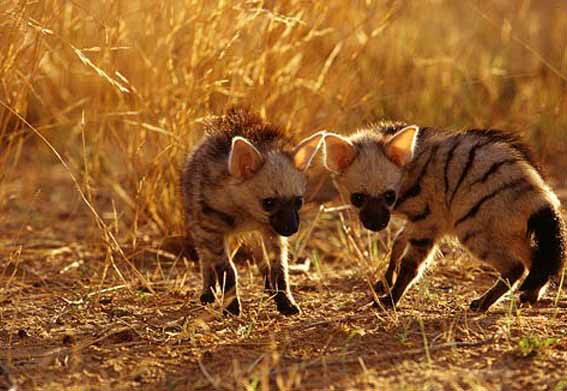Safari Journal - October 2018
Madidi National Park - Bolivia
Madidi National Park is one of the newest and most spectacular of the world’s reserves—enormous, encompassing some 7,345 square miles (19,000 km2) of largely untouched forest bordering Bolivia’s western frontier with Peru.
Still not fully counted, more than 1,000 bird species have been recorded—more than 50 percent of all neotropical bird species, 11 percent of all bird species on earth. Some 44 percent of all neotropical mammal species are here and 38 percent of all neotropical amphibians, in habitat rising through cloud forest and glaciers close to 20,000 feet (6,000 m) and dropping to just 820 feet (250 m) above sea level.
Spectacular macaws—some of the world’s largest parrots, more than a yard (1 m) long, both scarlet and scarlet-and-green—gather in raucous flocks to ingest mineralized clay in riverbanks. Mammal species only sparsely present elsewhere have been observed in numbers here—abundant populations of tapirs and spider monkeys—along with such extreme rarities as short-eared dogs, in forests likely to be as species-rich as any on the continent. Grasslands are equally rich, with heartening populations of avian species declining precipitously elsewhere, such as cocktailed tyrants and ...
Final counts for all biota on this huge largely unstudied tract can only be estimated. With adjacent Tambopata-Candamo Reserve and nearby MANU NATIONAL PARK to the west in Peru, down to adjoining Apolobomba Reserve on the Bolivian altiplano to the southwest, which has the largest vicuña and condor populations in Bolivia and huge numbers of flamingos and other waterfowl, this may be the most biodiverse terrestrial site on the globe.
This New York Times article covers recent findings in Madidi National Park:
Is This the World’s Most Diverse National Park?
Bringing the numbers to life for the jewel in Bolivia’s conservation crown.
Royal flycatcher - Credit: Rob Wallace/Wildlife Conservation Society
Canada’s Bow Valley has been living harmoniously with grizzly bears and other wildlife for the the past 20 years.
Read about other Grizzly Bear habitats.
Shoe-bill (or Whale-headed) Stork
From an article in Audobon.org entitled The Shoebill: Or, the Most Terrifying Bird in the World
The Shoebill will stand there, motionless as a statue, and wait for some poor lungfish or baby crocodile to swim by. Then the bird will pounce forward, all five feet of it, with its massive bill wide open, engulfing its target along with water, mud, vegetation, and probably any other hapless fish minding their own business. Clamping down on its prey, the bird will start to swing its massive head back and forth, tipping out whatever stuff it doesn’t want to eat. When there’s nothing but lungfish or crocodile left, the Shoebill will give it a quick decapitation with the sharp edges of the bill (because of course it does) and swallow away.
Sound terrifying? Yeah, it is. But it’s also impossible not to be impressed by these giants. Shoebills have been a beloved species for a long time. They appear in the artwork of the ancient Egyptians. Arabs reportedly called the bird Abu-Markhub, or “father of a slipper” (just can’t get away from that shoe imagery).
So, anything cool about the bill other than that it’s gigantic, looks like footwear, and can decapitate crocodiles? Sure: It makes awesome machine-gun noises. Shoebills are silent most of the time but engage in “bill-clattering” around the nest or when greeting another bird. It’s loud and scary and the last sound that lots of poor monitor lizards ever hear.
Read more by selecting the button below.
Areas of the world where these unusual birds reside.
China's Demand for Exotic Pets Brings Business and Concerns - National Geographic
Exotic pet ownership in China is booming. The country is seeing a sharp increase in the number of non-traditional pets, and one young collector is looking to profit from the demand. However, the lines between legal and illegal trade of wildlife are blurred.
Aardwolves
The aardwolf is a small, insectivorous mammal, native to East and Southern Africa. Its name means "earth wolf" in Afrikaans and Dutch, is in the same family as the hyena but unlike the hyena, the front feet have five toes each, instead of four. Unlike many of its relatives in the order Carnivora, the aardwolf does not hunt large animals. It eats insects mainly termites, as many as 250,000 termites during a single night using its long, sticky tongue.
Found in the shrub-lands of eastern and southern Africa they live in burrows but they do not build their own.
Instead, they find burrows created by other animals and take them over. Rude, but efficient. Fully grown adult Aardwolves only getting as big as your average forest fox.
Unlike many brush-land creatures these animals are in fact, monogamous creatures. Aardwolves are not very territorial over their burrows or lands but they are particularly territorial over their mates. These creatures are still so new to the books and studied by animal researchers and scientists.
Aardwolves live in these areas. Select a Reserve below to view details page.
Mauritius - off the coast of Madagascar
Underwater Waterfall
Mauritius is an island just off the coast of Madagascar. The island is home to some of the rarest plant and animal specimens in the world. It is also home to an optical illusion that makes it look like there’s really an underwater waterfall – within the ocean! Near the shores of Le Morne Brabant in the South-West of Mauritius. The illusion is the result of the movement of sand and silt sediments under the influence of powerful underwater currents.
The seemingly cliff-like drop-off is not any deeper than the surrounding area. The color of the water is a little bit different depending on the ground beneath it, making some areas appear deeper than others.
The entire island maps in at 720 square miles, and has its very own time zone. The island is also home to some very rare wildlife, some of which you will only find on the island (pink pigeons, the red-headed bird Mauritius fody, and the exotic shrub trochetia boutoniana, to name a few).
Le Morne Cultural Landscape, a rugged mountain that juts into the Indian Ocean in the southwest of Mauritius was used as a shelter by runaway slaves, maroons, through the 18th and early years of the 19th centuries. Coming from the African mainland, Madagascar, India, and South-east Asia. Protected by the mountain’s isolated, wooded and almost inaccessible cliffs, the escaped slaves formed small settlements in the caves and on the summit of Le Morne. Indeed, Mauritius, an important stopover in the eastern slave trade, also came to be known as the “Maroon republic” because of the large number of escaped slaves who lived on Le Morne Mountain. [Source: whc.unesco.org]
Advertisements















